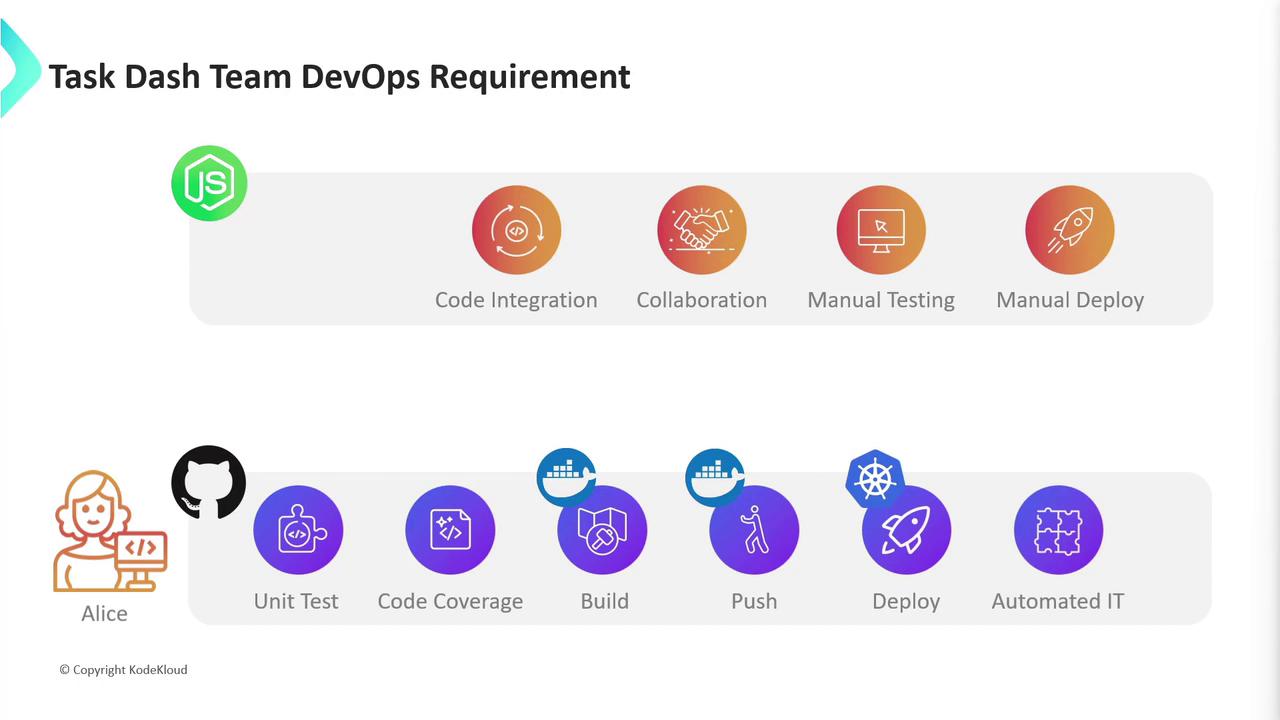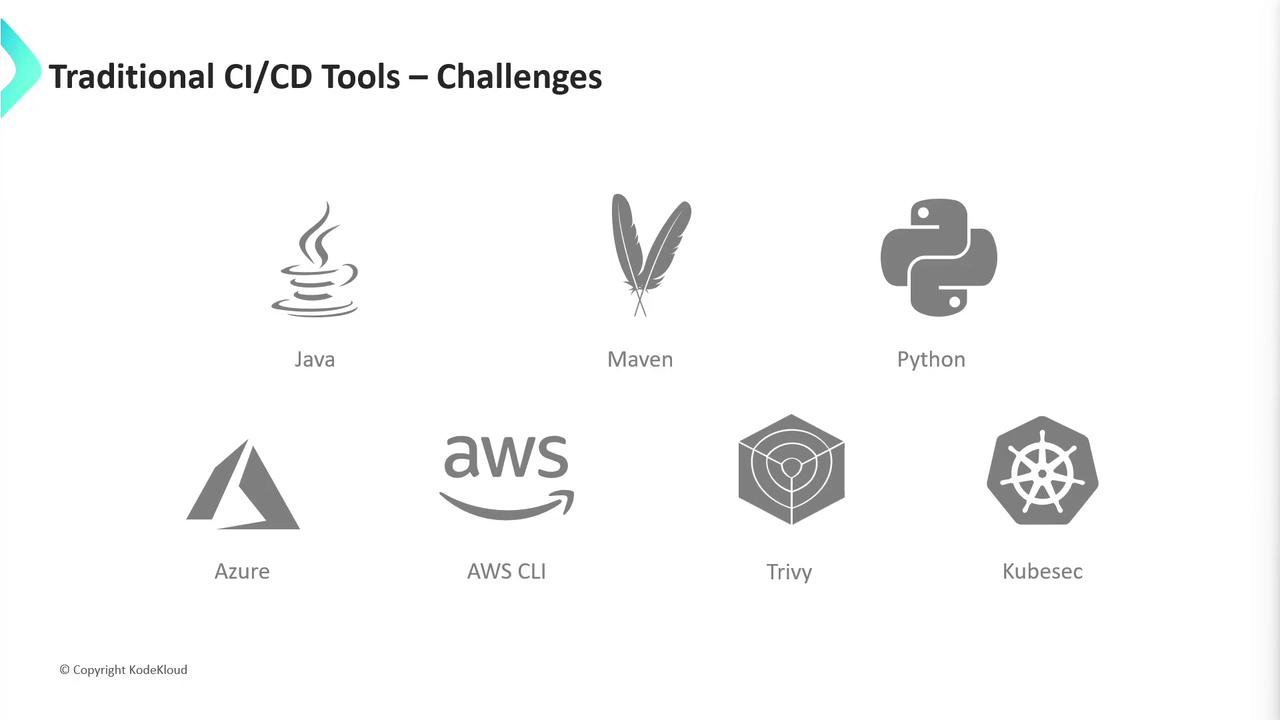Certified Jenkins Engineer
Introduction and Basics
Problem Statement Meeting with Dasher Team
This article examines the DevOps prerequisites of Dasher Technology and demonstrates how GitHub Actions can streamline their CI/CD workflow.
Dasher Technology offers a platform that integrates data, applications, and devices across on-premises environments. Their R&D team is exploring cloud migration and containerization, starting with a Node.js project before extending to Java and Python applications. To spearhead this, they formed a DevOps team led by Alice, whose mission is to design and implement a best-practice CI/CD pipeline on a multi-cloud infrastructure using Docker and Kubernetes.
Current State and Challenges
Alice’s assessment uncovered several critical gaps in the existing Node.js project:
- No version control system in place
- Developers work in isolation with manual code integration
- Slow, error-prone testing and infrequent merges
- Manual deployments across development, staging, and production
Warning
Without version control and automation, release risk is high and collaboration suffers.

Defining the CI/CD Pipeline
To address these challenges, Alice defined a CI/CD pipeline with these stages:
- Adopt GitHub for version control and team collaboration
- Automate unit tests and measure code coverage
- Build and push Docker images
- Deploy the application to Kubernetes
- Run automated integration tests
Evaluating CI/CD Tools
The market offers many CI/CD solutions:
| Tool | Pros | Cons |
|---|---|---|
| Jenkins | Extensible, self-hosted, large plugin library | Manual maintenance, steep learning curve |
| Travis CI | Easy cloud setup, GitHub integration | Limited concurrency in open-source tier |
| CircleCI | Fast workflows, SSH debugging | Usage-based pricing |
| Spinnaker | Kubernetes-centric, advanced deployment models | Complex configuration |
| Bamboo | Tight Jira integration | License costs |
These tools require provisioning servers, installing dependencies, and ongoing management. As projects multiply (Java, Python, AWS, Azure), manual overhead grows:

Jenkins Setup: Manual Steps
If choosing Jenkins, the initial setup includes:
| Step | Description |
|---|---|
| 1 | Provision VM with CPU, memory, and disk |
| 2 | Install Java JDK |
| 3 | Configure firewall rules |
| 4 | Install Jenkins and required plugins |
| 5 | Install Node.js, npm (multiple versions) |
| 6 | Install Docker for image builds |
| 7 | Install kubectl, Helm, and other Kubernetes clients |
| 8 | Add CLIs for integration testing and reporting |
Note
As the ecosystem expands, you may also need Maven, Python, AWS CLI, Trivy, KubeSec, and other DevSecOps tools.
Why GitHub Actions?
Alice needed a solution that:
- Requires minimal setup and no separate infrastructure
- Lets the team focus on pipeline development, not server management
- Scales automatically across multiple languages and clouds
After evaluation, GitHub Actions emerged as the best fit. In the next sections, we will:
- Initialize the GitHub repository for Node.js
- Configure workflows for testing and code coverage
- Build and publish Docker images
- Deploy to Kubernetes using
kubectland Helm - Automate end-to-end integration tests
Links and References
- GitHub Actions Documentation
- Docker Hub
- Kubernetes Basics
- Trivy: Container Image Security Scanner
- Helm Charts
Watch Video
Watch video content